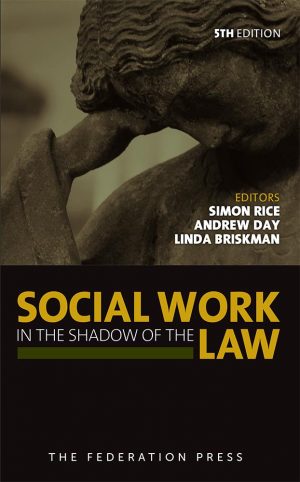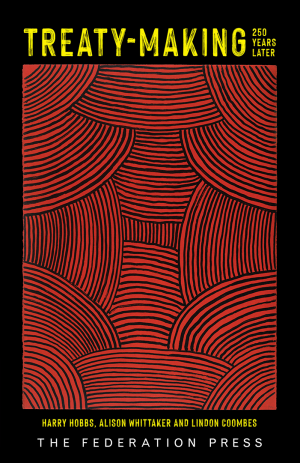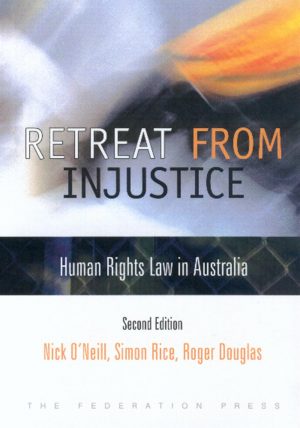‘These are the cases that have shaped, and continue to shape, the moral heart of the nation. That moral heart is learning to embrace our First Nations, but First Nations and First People know only too well that courts applying human rights law can deliver justice where Parliament lacks the will or bravery.’
– Tony McAvoy SC
‘An essential resource for all interested in how we can advance human rights
through the law in Australia – and demonstrates why Australians need and
deserve better human rights protections in our laws and in our Constitution.’
– Jennifer Robinson, international human rights barrister and author
The first book of its kind, 50 Human Rights Cases that Changed Australia summarises Australia’s 50 most significant and influential human rights cases. The cases include landmark human rights cases from all Australian states and territories. They range from the seminal freedom of expression and First Nations land rights cases of the 1990s, to lesser-known earlier cases on civil liberties and criminal procedure and more recent advances in LGBTIQA+ rights, environmental rights, and the rights of people with disabilities.
Each case summary explains, in plain language, the facts, the issues and the outcome of the case. Each summary also contains key quotes from the judgment, commentary situating the case in its social and political context, and critical analysis of the case’s impact.
The first half of the book contains summaries of cases that have advanced the rights of particular groups in the Australian community: First Nations rights; women’s rights; LGBTIQA+ rights; disability rights; children’s rights; asylum seeker and refugee rights; prisoners’ rights.
The second half of the book contains summaries of cases dealing with particular human rights: the right against racial discrimination; the right to liberty; criminal justice rights; the right to freedom of expression; democratic rights; the right to a healthy environment; and the rule of law.
The cases demonstrate the potential of the law to achieve justice, as well as its limitations. They also reveal Australia’s human rights protections to be piecemeal and inadequate — illustrating the urgent need for a constitutional bill of rights.
Written by two practising human rights lawyers, this anthology is an essential resource for law students, lawyers and activists. It also provides an engaging overview to anyone who might be curious about how the law, and in particular litigation, has advanced human rights in Australia.
Acknowledgment of Country
Author acknowledgments
Foreword by the Hon Michael Kirby AC CMG
Introduction
Note to readers
Chapter 1: First Nations rights
Chapter 2: Women’s rights
Chapter 3: LGBTIQA+ rights
Chapter 4: Disability rights
Chapter 5: Children’s rights
Chapter 6: Rights of asylum seekers and refugees
Chapter 7: Prisoners’ rights
Chapter 8: Right against racial discrimination
Chapter 9: Right to liberty
Chapter 10: Criminal justice rights
Chapter 11: Right to freedom of expression/ political communication
Chapter 12: Democratic rights
Chapter 13: Right to a clean, healthy and sustainable environment
Chapter 14: Rule of law
What are the two human rights cases law students must read in the book? Why?
Of course we would say they should read all 50! But if we had to pick just two, the first would undoubtedly be Mabo. Eddie Mabo’s long fight for justice makes for an epic narrative. The judgments contain iconic comments on Australian law, history and human rights, which are by turns soaring and devastating. And the outcome of the case changed the Australian legal system in a fundamental way. As Paul Keating said, Mabo established (or, rather acknowledged) a fundamental truth, and laid the basis for justice. All Australian law students, and indeed all Australians, should have a thorough understanding of the case and its implications. The case has never been more relevant, given the upcoming referendum on constitutional recognition and contemporary debates regarding First Nations sovereignty. In recognition of its importance, Mabo is the first case to appear in the book.
The second case is harder to choose, but a good candidate is a criminal law case from the 1930s called Tuckiar v The King. In that case, a Yolngu Elder called Dhakiyarr Wirrpanda had been convicted of the murder of a white police officer, for which he was sentenced to death. Dhakiyarr had been arrested and put on trial as a result of extensive public pressure following the police officer’s death, and Dhakiyarr’s trial was characterised by shocking incompetence on the part of his counsel, and blatant unfairness to him by the judge. In one of its most famous and celebrated decisions, the High Court overturned Dhakiyarr’s conviction on the basis that there had been a miscarriage of justice. However, as we explain in the book, the injustice inflicted on Dhakiyarr and his people did not end with the High Court’s decision. The case therefore illustrates both the capacity, and the limitations, of the Australian legal system to deliver justice.
What did you discover about Australia’s human rights case law that surprised you while writing the book?
What will probably surprise many readers is simply the quantity of successful Australian human rights cases. Because Australia does not have a constitutional bill of rights or a federal human rights Act, and because our human rights record is undeniably poor, many people assume that Australia has very few successful human rights cases. However, this is not the case. In fact, Australia has a rich history of impactful human rights cases, and we are of the view that these cases deserve to be more widely known and appreciated. What surprised us most was the diversity of the case law. The cases are scattered across various legal forums and areas of law. Further, arguably because of Australia’s deficient human rights protection system, litigants have deployed a vast array of legal mechanisms to protect and advance their human rights. Because of this diversity, and because some of the cases do not explicitly refer to human rights, it can be difficult to obtain a comprehensive understanding of Australia’s successful human rights jurisprudence. We have sought to address this issue by collecting 50 of the most impactful and significant cases together in one book.
What are the under-explored areas of human rights law you expect to develop over the next few years?
One rapidly emerging area of human rights law, which we discuss in the book, relates to the human rights aspects of climate change. There is a growing movement of climate change litigation in Australia and across the globe. The Supreme Court of the Netherlands held that the Netherlands government was obliged by the right to life and the right to private and family life to take action on climate change. In a case summarised in the book, Gloucester Resources Ltd, a NSW Court refused to approve a coal mine on the basis that its emissions would contribute to climate change. Last year the United Nations declared access to a clean, healthy and sustainable environment to be a universal human right and it has previously ruled that the right to life entails an obligation to protect against climate change. Last year, the United Nations Human Rights Committee ruled that Australia’s failure to adequately protect Torres Strait Islander peoples from the adverse impacts of climate change violated their human rights. Given the increasingly urgent nature of the various environmental crises we face, and the success of these human rights cases, we expect to see many more similar cases in the near future. Other areas of law to keep a watch on include the right to privacy, which is likely to develop in response to intrusions by invasive technologies, and the nascent right to ‘switch off’ from work. Similarly, given the sudden explosion in utilisation of artificial intelligence tools, the right against discrimination is likely to be deployed to respond to biases that have been proven to be inherent in AI tools.
Why should people buy the book?
This book is the first of its kind. It brings together, in one resource, Australia’s 50 most significant and influential human rights cases. While there are many books that comment on Australian human rights law from an academic perspective, there are few that provide a practical resource or which are in a format that is clear and accessible to the general public. The book is therefore an essential resource for law students, lawyers and activists, and can be used as a ‘toolkit’ to assist in devising human rights litigation strategies. It also provides an engaging overview to anyone who is curious about how the law, and in particular litigation, has advanced human rights in Australia.
The cases summarised in the book demonstrate the potential of the law to achieve justice. We therefore hope that our book might inspire law students, lawyers, activists and others to undertake human rights work by creatively using the legal tools that are available and also by contributing to debate about the reforms required to ensure that human rights are adequately protected in Australia.
The Australian Human Rights Institute (UNSW Sydney), the Public Interest Advocacy Centre and Gilbert + Tobin held a book launch for 50 Human Rights Cases That Changed Australia in February 2023.
[Photo] Book launch panel Andrea Durbach AM (left) leading the discussion, along with GetUp! CEO, Larissa Baldwin-Roberts and authors Lucy Geddes and Hamish McLachlan – 21/02/22
[Photo] Book launch audience 50 Human Rights Cases That Changed Australia – 21/02/22
[Photo] Book launch audience 50 Human Rights Cases That Changed Australia – 21/02/22
[Photo] Book stand 50 Human Rights Cases That Changed Australia – 21/02/22
This book is a helpful gateway for those wanting to learn more about the litigation of rights and freedoms in Australia. For the more experienced, it is a useful resource which can be returned to from time to time. Read full review…
Dr Bruce Chen, Deakin Law School, Law Institute Journal, July 2023
Individual cases, multiplied by many repetitions, can help to teach big lessons. So it is in 50 Human Rights Cases that Changed Australia, a courageous, innovative and novel text.
…
[This] book illustrates the potential of our legal system to safeguard and advance individual human rights while invoking often very limited tools and rejecting over-narrow legal outcomes. That may be its greatest value. Read full review…
The Hon. Michael Kirby, LSJ Online, Mar 07, 2023.







